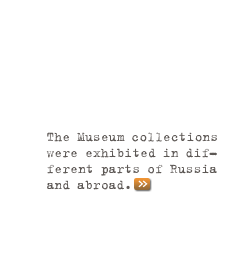Museum Collection
The Red Banknote
In Russia, before the Revolution, the 10-ruble banknote was called by people “a red banknote” or “chervonets”.
In the novel “And Quiet Flows the Don” by M.A.Sholokhov we read: “Miron Grigoryevich rummaged in the chest, pulled out a greasy kerchief, untied it, and counted out ten red ten-ruble notes.”
The National M.A.Sholokhov Museum-Reserve keeps a collection of bonistics of the XIX–XX centuries, which includes “red banknotes”, the State banknotes denominating 10 rubles of 1909.
The banknotes were emitted into circulation on December, 1, 1910, according to the decree of April, 29, 1909. They were printed till 1919 and were circulated till October, 1, 1922. The number of the emitted lettered series of the 10-ruble notes of 1909 was prevailed only by the 3-ruble notes of 1905 series, the most running banknote in money circulation of pre-revolutionary Russia. The 10-ruble note was the best option for people to keep their savings: on the one hand, it was expensive enough and thus advantageous for keeping their savings, and on the other, it was rather free-for-all.
Before the beginning of the XX century, the money printing technology flourished. At that time the Expedition of the State Securities (now Goznak Factory) attracted for cooperation the most famous painters and engravers –Y.Reikhel, A.Zauerveyd, F.Lundin, P.Ksidias. After long years of creative search the image of “the Russian currency” was found.
The State ten-ruble banknote was decorated in light shades of red with organically woven into the light-green and purple tones. Among the whole banknote series of 1909 it was the most “coloured”. Among the banknotes kept in the collection there are those shaded from brick-red to dark pink, the picture on the back varies from dark-purple to brown tones. The decoration of the note shows bright “modern” style: numerous symbolic elements reflecting the welfare of the State.
The front side contained all the basic useful elements of the note: a small coat of arms of the State in 1883, the denomination, inscription on the exchange of paper money for gold, facsimile signatures of the cashier and manager, a six-digit serial number and a two-letter series.
The backside of the note reads three sections of the decree on the rules of their circulation: “1. The exchange of the State banknotes for the gold coin is secured by all the property of the State. 2. The State banknotes are circulated throughout the empire on a par with the gold coin. 3. The persons guilty in forging banknotes are exposed to deprivation of all the property rights and are exiled to penal servitude.” The basic composition on the front and on the back sides were lush overhanging clusters of all kinds of fruits and flowers, which served a good means of protection against forgery: the seeming symmetry of the composition was deceptive.
The banknote was printed on white paper with water marks. In the production of the front and back sides an offset printing on the multicolour Orlov grid was used.
Nataliya Blagodarova
Lyudmila Kochetova











